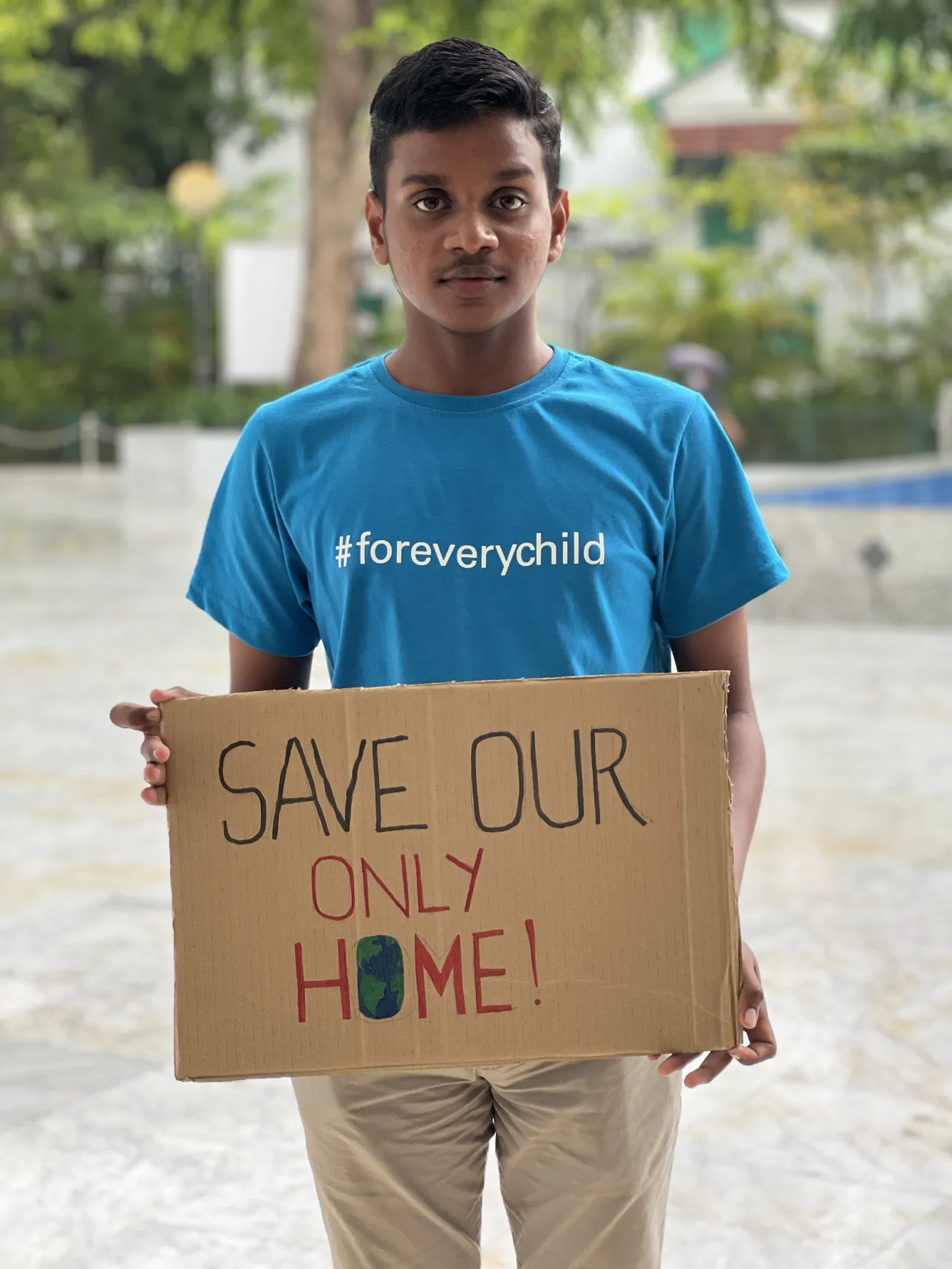Let’s Talk About Climate Emergencies
Young people are among the most vulnerable to the effects of climate change, such as heat, pollution and loss of green space. Children and youth are particularly vulnerable to the trauma of extreme weather events and disasters such as wildfires and floods, especially if they have to evacuate their homes and communities. They are also disproportionately affected by environmental damage, especially Indigenous and racialized children.
Many children and youth in Canada are concerned about the climate emergencies affecting their environments, communities and loved ones. A 2022 U-Report poll found that close to 60% of young people surveyed had experienced an environment-related crisis.

As UNICEF Canada’s Report Card 17 notes, Canada ranks 28th among 39 high-income countries in the overall environmental well-being of children and youth. Rising temperatures, higher sea levels, pollution, unsafe water, excess waste and extreme weather events affect not only the world we leave for future generations, but also the rights of the young people of today. Environmental damage is damaging children’s minds and bodies.
Every child has the right to a healthy environment.
Here are some helpful tips and resources to discuss climate emergencies with children and youth:
· Parents and caregivers can follow public health guidance during environment-related crises and engage children on the issue with hope and positivity by following UNICEF’s guide on how to talk to kids about climate change.
· Have a look at UNICEF’s Places and Spaces website, where kids share their views on their environments and how to make them right.
· Advocate for investments in environmental protection, as they will have particular benefits to children.
· Remind leaders that, to protect our children and the environment, we must urgently reduce emissions and switch to renewable energy, strengthen the services children rely on, and allocate funds to protect vulnerable children.
· Ask your local government if their emergency plans include a focus on children. This ensures continuity and restoration of the services they depend on, and that child-friendly spaces and approaches are in place in case of evacuation.
Young people are the least responsible, but the most affected by the impacts of climate change. Now is the time to act.
